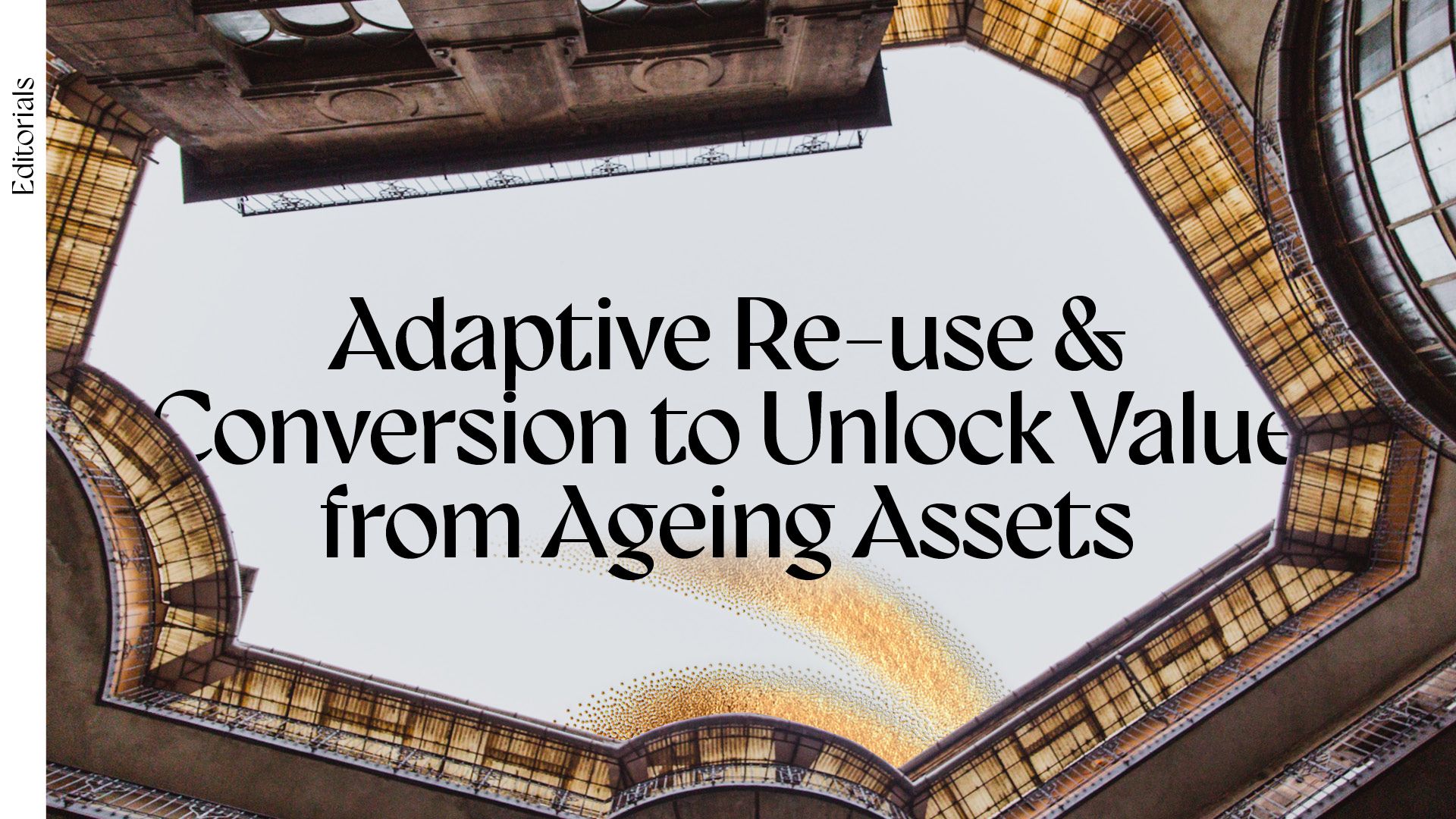Adaptive Re-use and Conversion to Unlock Value from Ageing Assets

The global real estate market is entering a new cycle defined not by greenfield development, but by adaptive re-use. Across major cities, investors and developers are turning their attention to underperforming or devalued assets (particularly ageing office stock) and converting them into residential, hospitality or mixed-use properties. This trend is gaining momentum as structural shifts in work, living and consumption patterns redefine demand. For investors, the opportunity lies not simply in recycling space, but in unlocking long-term value from overlooked assets.
Why Conversion is Rising on the Agenda
The driving force behind this shift is the imbalance between supply and demand across asset classes. Post-pandemic, hybrid working models have reduced the need for traditional office space, leading to higher vacancy rates in many commercial hubs. At the same time, urban centres are grappling with a shortage of affordable and quality housing. Adaptive re-use bridges this gap. Converting obsolete offices into residential units not only addresses housing shortages but also mitigates the financial risk of owning stranded assets.
Cities such as New York, London and Singapore are already setting precedents. In Manhattan, several outdated office towers are being repositioned as apartments to revitalise the downtown core. In London, developers are securing planning permissions to reconfigure low-demand office buildings into rental housing, supported by local authority incentives. These projects demonstrate that with the right vision and financial structuring, adaptive re-use can deliver higher yields than persisting with traditional uses in a declining market segment.
The Investment Case: An Appealing Risk-Return Profile
For real estate investors, conversion strategies present a compelling case. Firstly, the entry cost of acquiring devalued assets is often significantly lower than new development. Distressed sales, foreclosures or portfolio offloading by institutional owners create attractive acquisition opportunities. Secondly, conversion typically has a shorter delivery timeline compared with ground-up construction, allowing investors to respond faster to market shifts. Lastly, these projects can enhance ESG credentials, as repurposing existing structures reduces embodied carbon compared with demolishing and rebuilding.
The risk-return profile is increasingly appealing. In some North American markets, conversions from office to residential are producing internal rates of return (IRR) in the mid-teens, outperforming traditional buy-and-hold strategies in stagnant office markets. Institutional investors and private equity funds are now exploring dedicated adaptive re-use strategies, seeing them as a hedge against structural obsolescence in commercial real estate portfolios.
Navigating Financial & Regulatory Challenges
While the opportunity is clear, conversion is not without obstacles. Structural and regulatory challenges often determine feasibility. Older office buildings may not easily convert to residential due to floorplate depth, ceiling height or limited access to natural light. Retrofitting mechanical, electrical and plumbing systems can be capital intensive.
Regulation is another barrier. Zoning restrictions, building codes and planning approvals vary significantly across jurisdictions. Some cities have moved to streamline approvals, recognising the social and economic benefits of adaptive re-use. Others remain bureaucratically complex, eroding project viability. Investors must conduct rigorous due diligence, factoring in not just acquisition cost and capex, but also the regulatory pathway.
Financing also requires a nuanced approach. Lenders may remain cautious, particularly where valuations are uncertain or resale demand is untested. Creative financing structures, joint ventures, and public-private partnerships are often key to unlocking capital.
The Future is Re-Use & Re-Purpose
Adaptive re-use and conversion are no longer niche strategies; they are becoming mainstream in real estate investment. For owners of devalued assets, they represent a path to recovery. For investors, they offer a vehicle to redeploy capital into resilient, demand-driven sectors. And for cities, they provide a pragmatic solution to pressing urban challenges.
For investors and developers, the current environment presents a unique window. Office vacancies remain elevated globally and policymakers are increasingly supportive of initiatives that revitalise city centres and address housing deficits. Adaptive re-use aligns squarely with these priorities, offering both commercial upside and social impact.
Forward-thinking investors should build capabilities in feasibility assessment, regulatory navigation and stakeholder engagement. The winners in this trend will be those who can identify underperforming assets early, structure flexible financing and execute with operational efficiency.

To stay ahead of the curve and all the trends impacting the global real estate investment sector, join RISE Expo & Summit from 13 – 15 January 2026 at Dubai Expo City.
)
)
)